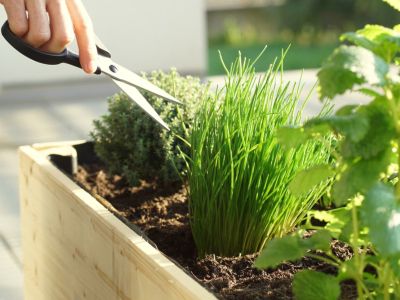If you live in an apartment, you may think a raised bed is out of the question, but with a little ingenuity, creating a raised apartment garden is very possible. Read on for balcony raised bed ideas and tips.
Raised Garden Beds for Balconies
Attractive raised garden beds are readily available and easy to put together. However, it’s not difficult to create your own raised bed on a balcony. Generally, a simple wooden box is the easiest way to go. The depth of the box depends on what you want to grow, but with a depth of 8 inches (20 cm.), you can grow vegetables like radishes, chard, lettuce, spinach, green onions, and most herbs. A depth of 12 inches (30 cm.) is enough for most flowers and vegetables, including root veggies like carrots, turnips, or beets. Don’t build a raised bed on a balcony until you’re sure the balcony is sturdy enough to hold a box filled with damp potting soil and plants. If you’re renting, talk to the building manager or landlord before you begin. You can construct a raised bed on a balcony with repurposed wood, but consider what the wood was used for previously. For instance, wooden pallets treated with chemicals are probably okay for flowers, but not for growing vegetables. The same goes for wood that has been stained or painted. You can also use rot-resistant cedar or redwood, which is attractive and long-lasting. If a regular raised bed is too heavy, a raised bed table may be a good option. A raised bed table holds less soil and is easy to move around with rollers.
Creating A Raised Apartment Garden
Plan your raised bed carefully. Most plants need six to eight hours of sunlight per day, although some, like spinach, chard, or salad greens, will do fine in a partial shade. Also, locate the bed where water is easily accessible. If you don’t want to build a wooden box, creating a raised apartment garden is easy with feeding troughs, which are available at farm supply stores. Be sure to drill drainage holes in the bottom. In general, a mixture of one-third compost and two-thirds potting mix is good for most plants. However, if you’re growing cacti or succulents, use coarse sand instead of compost Line your raised bed before you fill it with a planting medium. Food grade plastic is acceptable, but landscape fabric is better because it drains. Place the bed in its permanent location before you fill it. Unless the bed is on rollers, it’s going to be extremely difficult to move. Consider neighbors who live below you. Your raised bed on a balcony will need some sort of mat or catchment for excess water.
